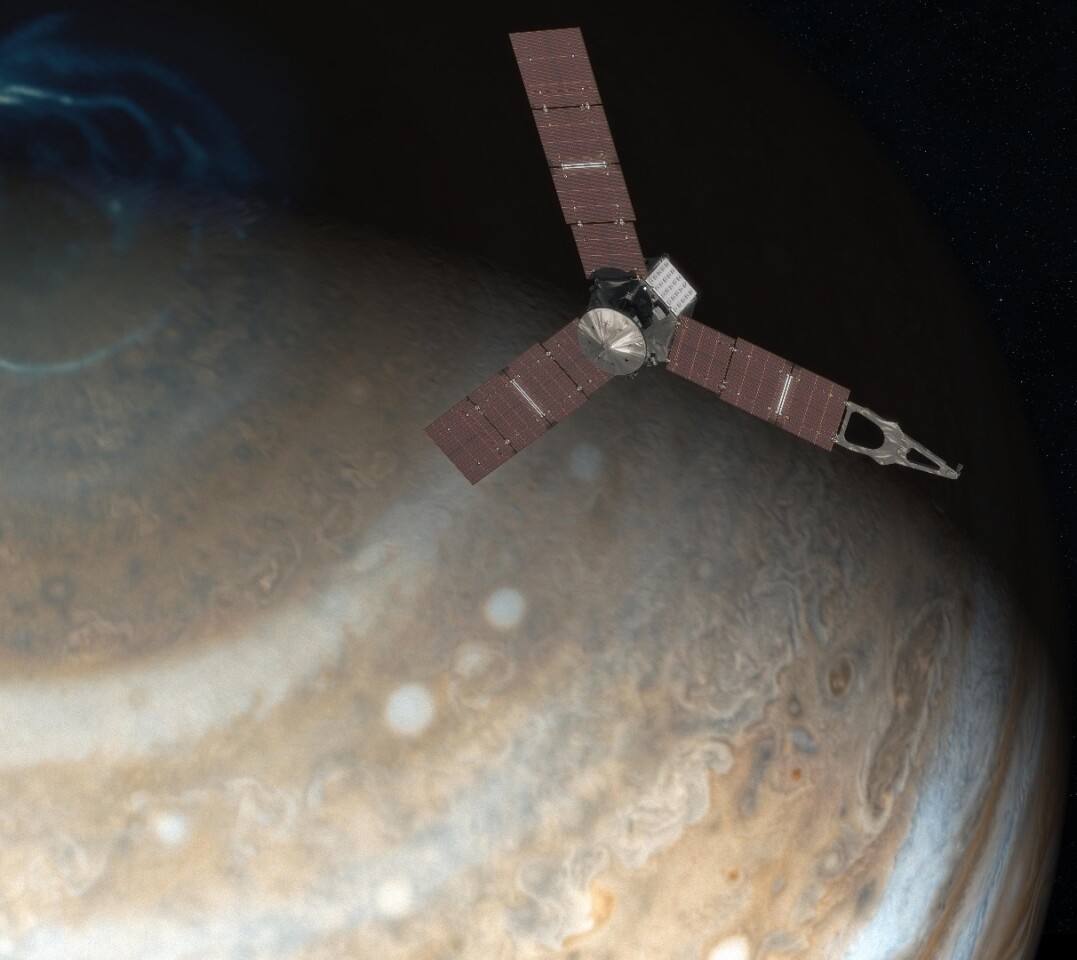Like any tourist, Juno is sending back snaps of its journey. The unmanned spacecraft was 6.8 million mi (10.9 million km) from Jupiter when it captured an image of the banded giant planet and its four largest moons, Io, Europa, Ganymede, and Callisto on June 21. The image was taken by the probe's JunoCam, which NASA describes as an "outreach instrument" to increase public participation in the US$1.1 billion mission.
According to the space agency, the cosmic photoshoot is part of Juno's preparations for its July 4 arrival in Jupiter orbit. After five years of coasting from Earth to the Jovian system, the probe began 24-hour a day transmissions on June 11 to keep mission control constantly updated about onboard conditions.
In addition to taking photographs of the scenery, Juno is also preparing for the all-important course correction burn that will place it into orbit around Jupiter. On June 20, the debris cover on its LEROS 1b main engine was opened and the software that will initiate the 35-minute burn was brought online.

NASA says that the spacecraft will pressurize its propulsion system on June 28 and that the next day it will switch off all non-essential instruments to conserve power for the orbit insertion maneuver.
Source: NASA








